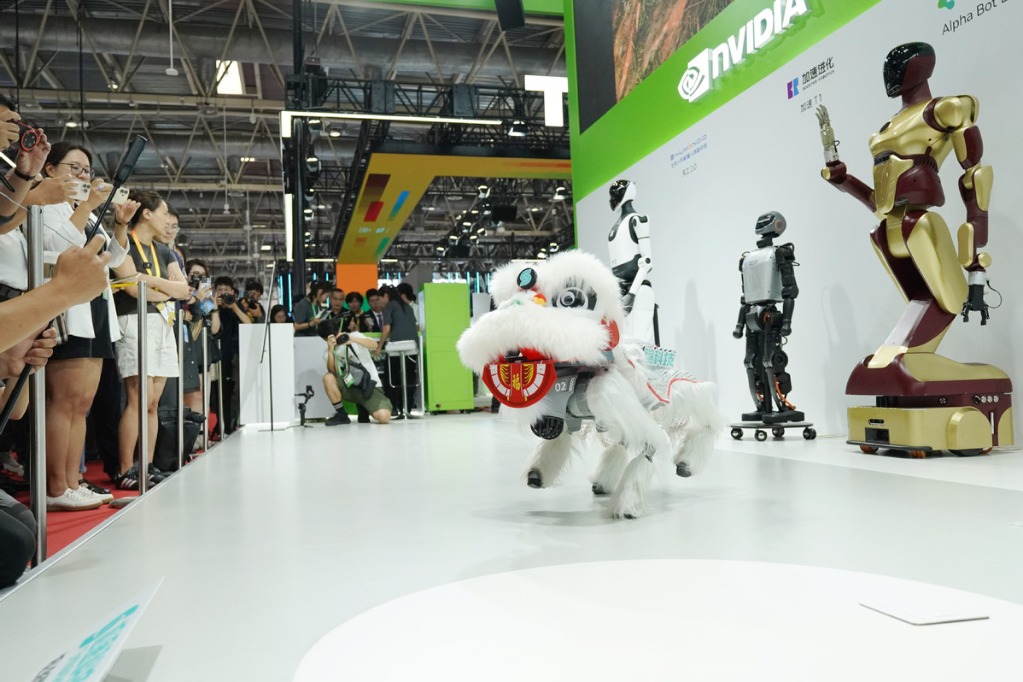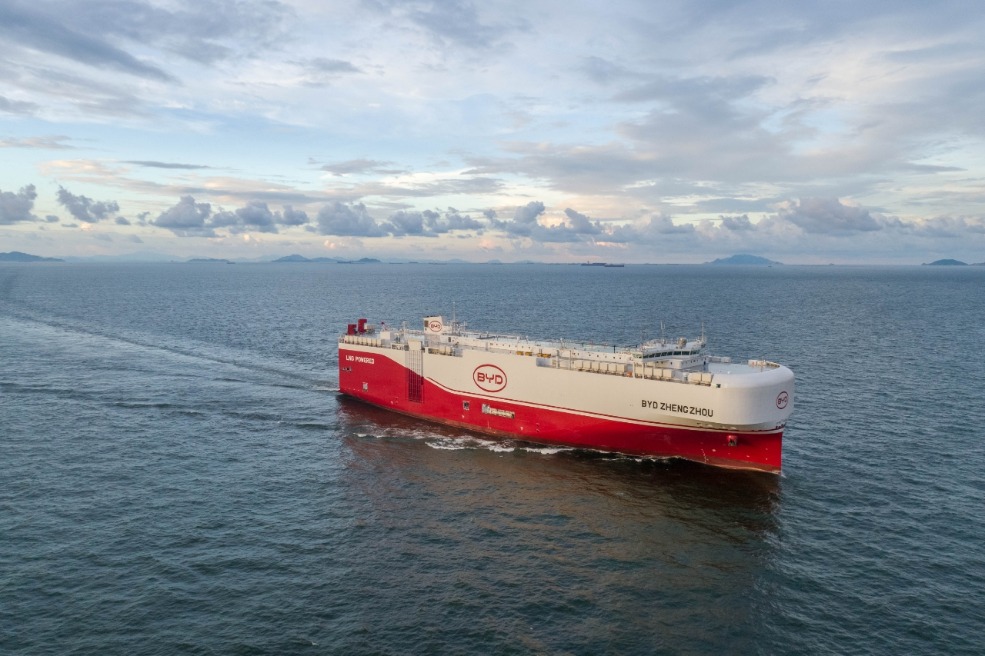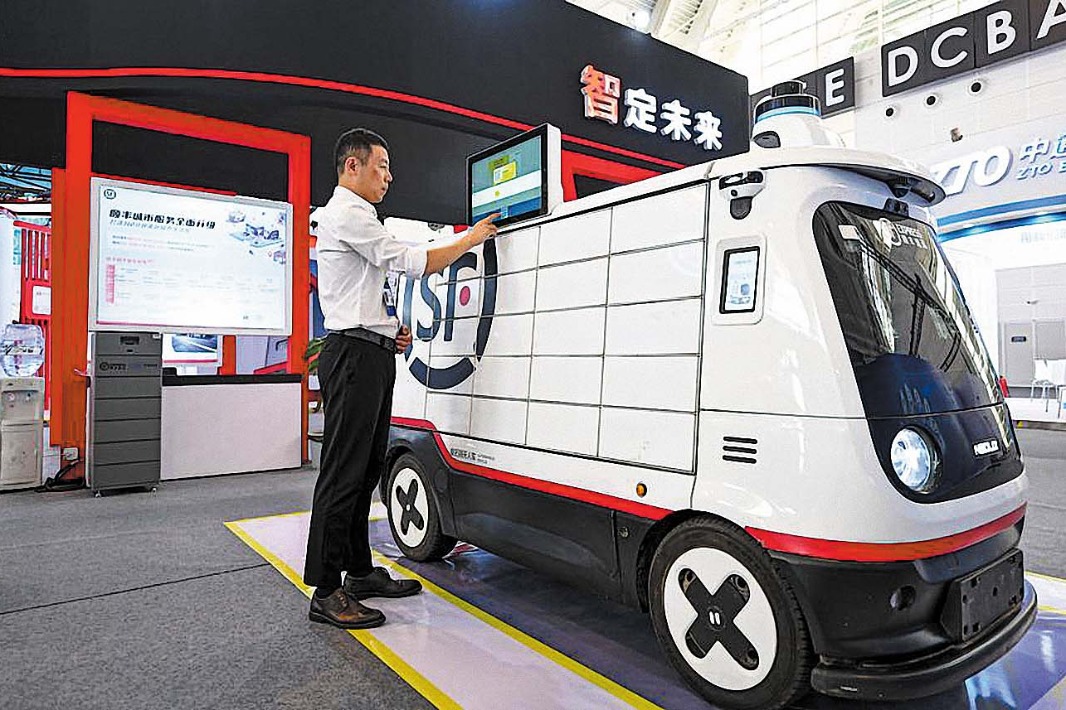Green, smart cities seen as growth drivers for new BRI projects


Given the complex global political and economic environment, mounting uncertainties and rising conflicts, the world needs new growth engines, new momentum and new paths for sustainable development, according to industry leaders.
Speaking at a Belt and Road Summit in Hong Kong, Fang Qiuchen, president of the China International Contractors Association, said development of green, smart cities holds the key to sustainable regional and global economic growth going forward.
"Planning and building model future cities that are green, livable, smart and harmonious, and that benefit people through innovation and technology is a common issue facing the world at present. It will become a new engine and new driving force for the recovery and development of the regional economy and the global economy," he said.
Fang, along with Patrick Lau, deputy executive director of the Hong Kong Trade Development Council, and some other government and business leaders, participated on Sept 13 in a dialogue session titled "Opportunities in Hong Kong Infrastructure to Boost High-quality Belt and Road Development" during the 8th Eighth Belt and Road Summit, a two-day event in Hong Kong that ran through Sept 14.
This year marks the 10th anniversary of the Belt and Road Initiative, or BRI, the China-led global infrastructure development program. Over the past decade, fruitful achievements have been made in the field of investments and construction in the field of infrastructure connectivity, effectively promoting policy communication, facilities connectivity, smooth trade, financial integration and people-to-people ties among the BRI countries, Fang noted.
Flagship BRI projects such as the China-Laos Railway, China-Belarus Industrial Park, Hungary-Serbia Railway, and the Jakarta-Bandung High-Speed Railway have been completed, standing as shining examples of China-backed development ventures.
Fang noted that this year is also "a critical time for the acceleration of Hong Kong's new development plan".
He said the high-standard and forward-looking planning of landmark projects such as Hong Kong's Northern Metropolitan Area and the Kau Yi Chau Artificial Islands points to bright prospects for Hong Kong's long-term development, and opened a new phase of development opportunities for the city's infrastructure building sector, attracting widespread attention.
"In this context, the theme of this year's(Belt and Road) forum accurately echoes the development theme of the times and the expectations of the industry," Feng added.
Given the theme, the forum has invited infrastructure authorities such as the Development Bureau of the Hong Kong Special Administrative Region (HKSAR) government, leading Chinese enterprises that showcase the "China Construction" brand under the BRI, and internationally renowned infrastructure design consulting firms such as AECOM and Arup Group.
"It is hoped that industry elites will jointly explore how to make full use of the new opportunity phase of Hong Kong's infrastructure development, better play the advantages of the 'China Construction" brand and capabilities, make good use of Hong Kong's advantages in internationalization, professional services and Hong Kong's rich experience in franchising business models over the years, and build Hong Kong into a new model city for sustainable development of BRI cities and contribute to the high-quality development of the BRI," Fang said.
He noted that besides spillover risks from geopolitical conflicts in the world, the spread of anti-globalization has led to the rise of protectionism, and inflation and debt risks in some countries have risen prominently. Given all these factors, global economic growth is relatively weak.
Modern cities, however, can act as the gathering place for regional populations, industries and resources, and serve as the "locomotive" of economic and social development, he said.

Fang noted that on the one hand, acceleration of global urbanization and the new round of technological revolution bring new growth opportunities to the area of traditional infrastructure building and urban renewal. Development opportunities have emerged in new infrastructure fields such as low-carbon cities and smart cities. The "digital intelligence" industry is accelerating its integration with traditional infrastructure building and its integration with urban green and sustainable development.
On the other hand, the regional economic integration and development trend is evident, and urban agglomerations, metropolitan areas and bay areas' demand for green, innovative and sustainable development models, experiences and solutions is increasing.
"Therefore, I believe that the successful implementation of Hong Kong's new infrastructure development plan project is of great significance, which will make Hong Kong a truly new hub for interaction between Hong Kong, Shenzhen and the wider Guangdong-Hong Kong-Macao Greater Bay Area, a new node for the integration of China and the world, a model city for the harmonious development of scientific and technological innovation and green human settlements along the BRI," said Fang.
"It will also provide more inspiration and experience for the sustainable development of the BRI cities in the future."
Bernadette Linn Hon-ho, HKSAR's secretary for development, delivered the opening remarks at the forum. The other speakers included Morgan Yang, vice president of transport infrastructure, Greater China, for AECOM; James Sze, East Asia Region COO of Arup Group; Du Feng, general manager of Beijing Urban Construction International; Ye Haoliang, assistant president of PowerChina International Group Ltd and vice president of PowerChina Asia Pacific.




































